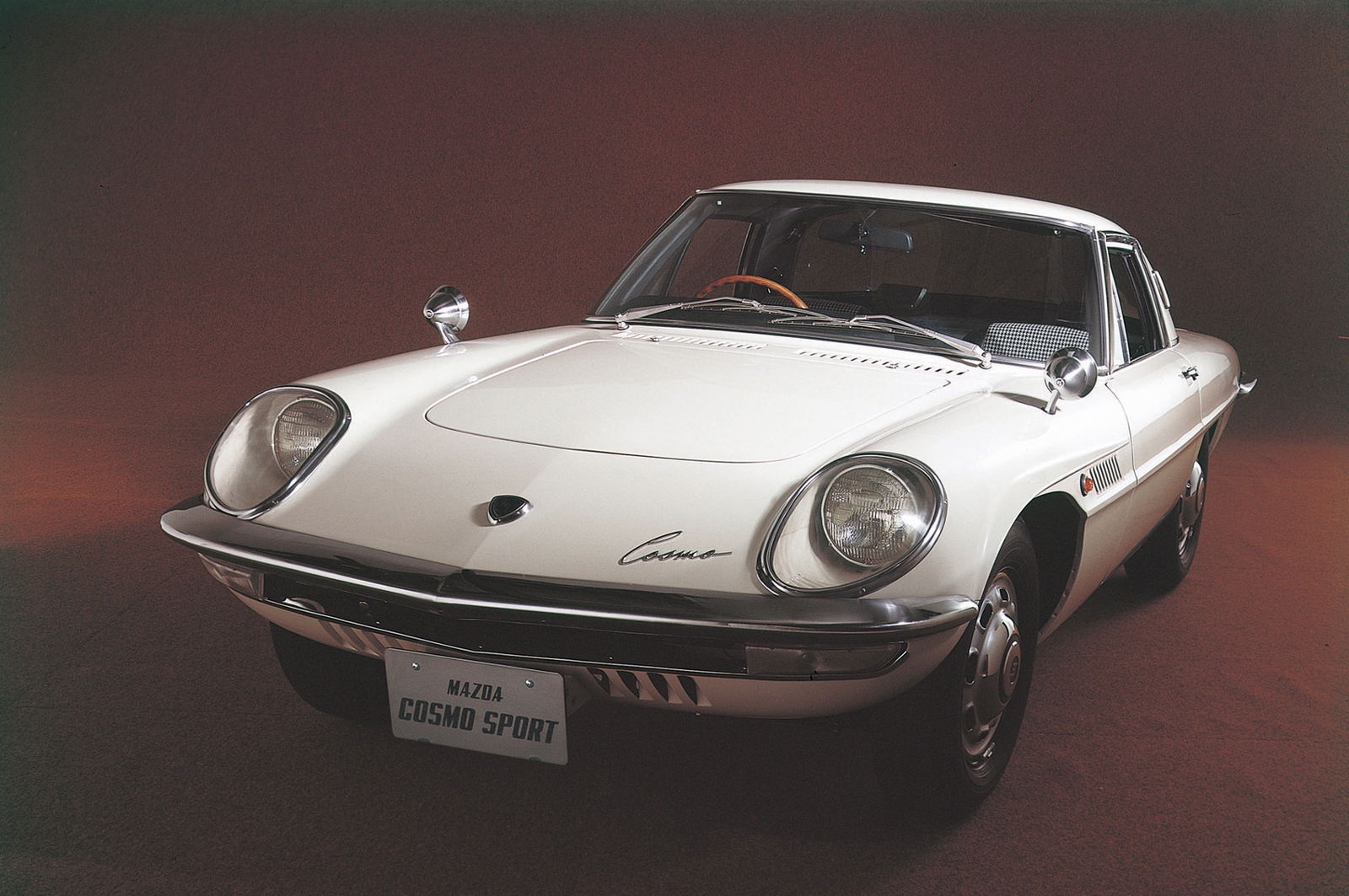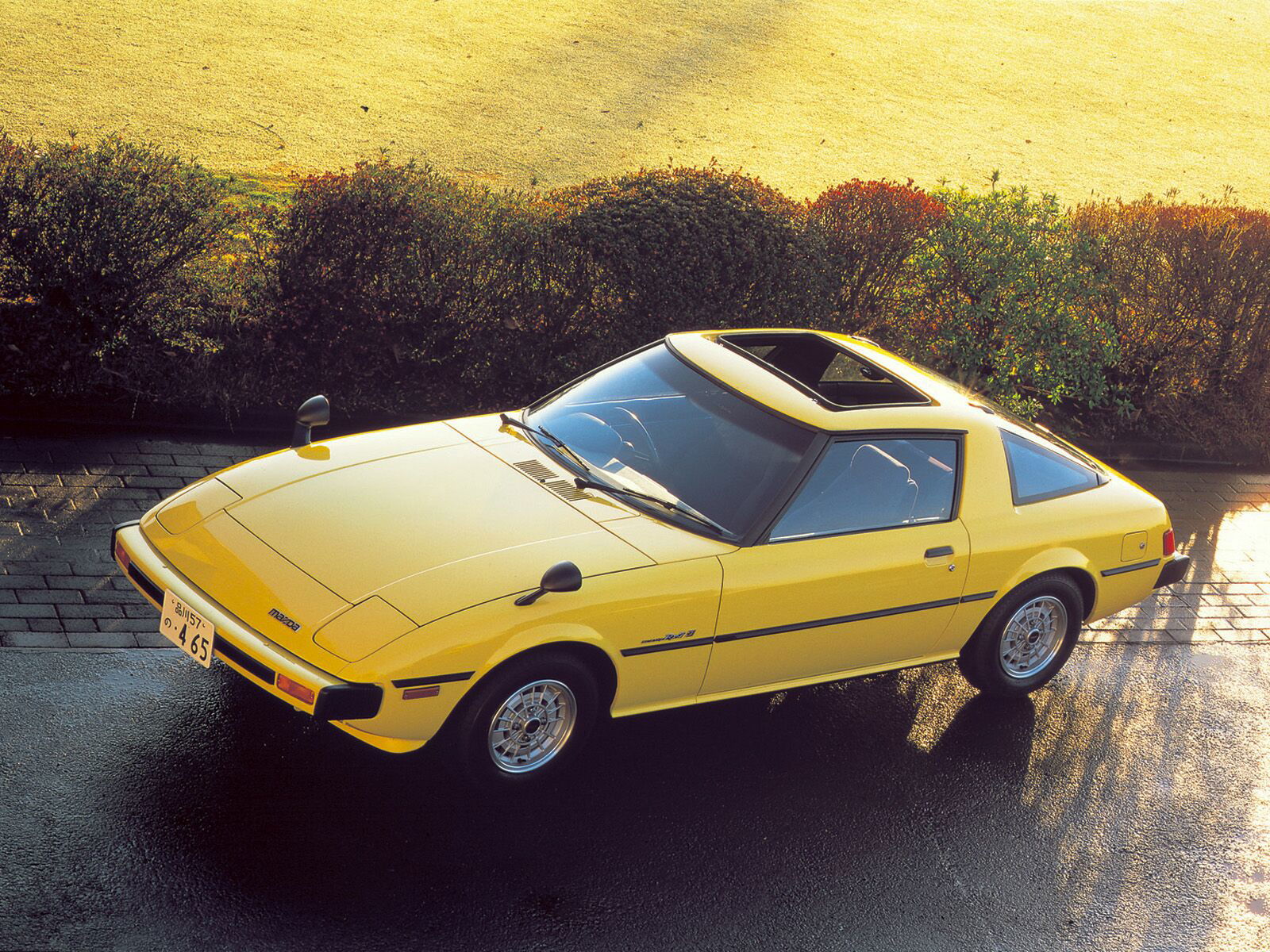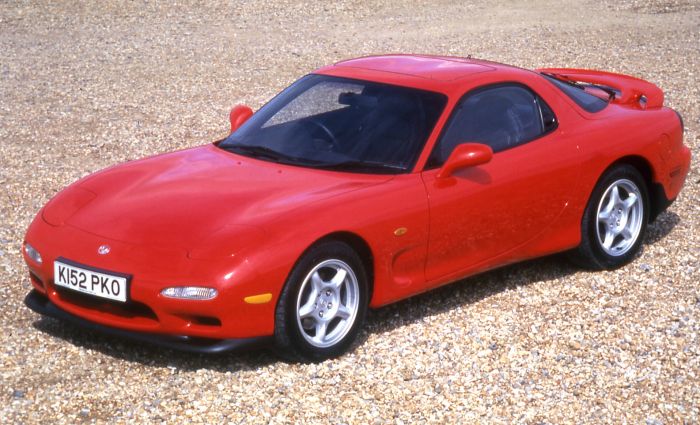4 Cars That Led Us To The Mazda RX-Vision

Today, Mazda pretty much won the Tokyo Motor Show with its rotary-powered RX-Vision concept, which it has all but admitted is a preview for an RX-7 successor. Naturally, this is something that excites us greatly, but how has Mazda gotten to this point? These are the key cars from Mazda’s rotary sports car history that the RX-Vision has to thank for its existence.
Cosmo

While it had been beaten to the title of ‘world’s first rotary-powered production car’ by the NSU Spider, Mazda’s debut Wankel-engined effort was the first to feature a two-rotor design. It was named ‘Cosmo’ - inspired by public fascination with the Space Race during the car’s late 60s release - and although it wasn’t the last rotary Mazda to have that name, it was certainly the prettiest.
It paved the way for future rotary Mazda sports cars, and it’s also set to play a part in the new RX-7. Mazda president and CEO Masamichi Kogai has hinted about a car which is "not a concept" which the company will reveal in 2017 to coincide with the 50th anniversary of the first Cosmo. No prizes for guessing what this "not a concept" car will be…
SA22C/FB RX-7

The whole rotary engine thing didn’t have the best image in the late 1970s. This was largely down to the failures of the unreliable NSU Ro80 saloon, which were bad enough to nearly sink the West German company, forcing it to merge with Auto Union and create Audi. So, it was down to Mazda to prove that rotary engines could still be durable, which it did with the first RX-7 and its better developed rotor tips.
Arriving in 1978 and replacing the RX-3, the RX-7 (like its RX-3 predecessor known as the ‘Savanna’ in Japan) had a 50/50 weight distribution, thanks in part to its light, 105bhp 1.1-litre twin-rotor engine being mounted behind the front axle. Oh, and like the Porsche 924 it rivalled, it’s blessed with pop-ups, which makes it awesome. Obviously.
FD RX-7

The best-loved RX-7 - and probably half the reason for Mazda to continue its unconventional rotary crusade - has to be the curvaceous FD. The second-generation RX-7 upped the ante in the power stakes, but the third-gen FD pushed the 13B twin-rotor engine even further with a sequential twin-turbocharger system, with one blower providing boost at low RPM, and the other bringing the boost at high RPM.
The later models are good for around 270bhp, and FDs of any age possess all the attributes that made the previous RX-7s so good: a near-50/50 weight distribution, excellent handling, not a whole lot of weight and ruddy pop-ups, all wrapped up in a handsome coupe body. The FD is a timeless design that’s reaching iconic status, so we’ll forgive it for whole apex seal thing…
RX-8

Mazda’s last rotary effort - the RX-8 - hasn’t enjoyed the same celebrated status as the old FD. Its looks continue to divide opinion, it needs a particularly attentive owner to be kept healthy, there was no turbo version (a turbocharged prototype was built, but a production version never materialised), and it has the same heinous thirst as the RX-7s which came before it.
Despite all that, this attempt to build a rotary sports car for the masses still deserves respect. There was nothing else like it on sale during its 2003-2012 production run, and the later R3 examples are genuinely brilliant cars. And let’s not forget the clever packaging, with the extra set of ‘suicide’ doors making access to the rear seats easier.
As the last rotary Mazda it’s effectively the RX-Visions’ closest relation, but it also shows where the company needs to make improvements before any production RX-7 arrives - primarily with the durability and efficiency (it was high emissions that forced the end of the RX-8’s production run) of that unconventional Wankel engine. We can’t wait to see what they come up with.

Comments